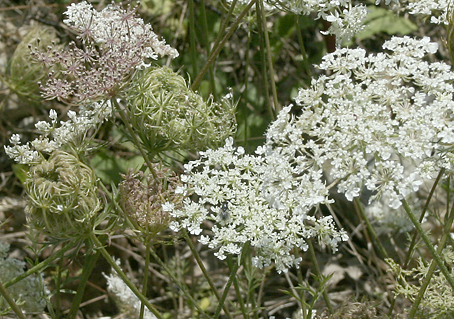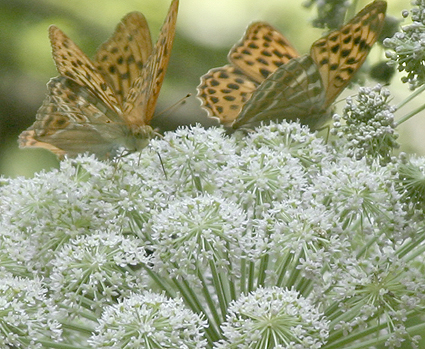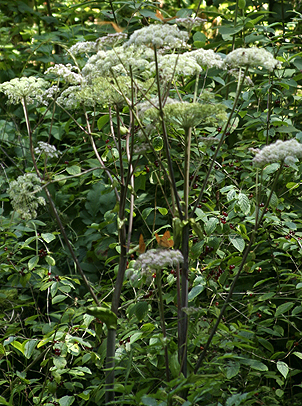Queen Anne’s Lace, or Wild Carrot
This is such a common flower round here, you would think I would know it. The problem is, the plant is very variable and I hadn’t assumed they were one species. Sometimes these flowers have a tiny purple flower in the centre, and sometimes they don’t. Nobody knows why. Sometimes they grow in groups, sometimes alone. It’s mostly when they grow in groups that I notice them making that characteristic bird’s nest as they go to seed.

What is bothering me is that the ones that grow in groups, that I notice ‘bird-nesting’ never seem have the little purple flower. They are typically later in the year. The one’s with the flower tend to grow alone. They started much earlier than the group ones, though they are still around. Anyway, I am now convinced that they are usually given the same name.
Queen Anne’s Lace is naturalised in North America, and I think it sometimes considered a pest. You can eat the roots, if you want – that might get rid of it!
Angelica Sylvestris

A few specimens of this flower in a particular spot each year, down by favourite stream. I think it can generally be found along the streams around here, but it is not extremely common. It is a beautiful mass of butterflies and other pollinators. And it grows taller than me, about 2m.

I do not know if Angelica Sylvestris grows outside of Europe, but I did discover that there is a very poisonous plant called Water Hellebore that looks a bit like this Angelica, and grows in North America. Apparently, you should avoid even touching it.
This Wild Angelica is supposed to be edible, but sadly, it is not the garden Angelica whose stems are candied for cakes and things. I wouldn’t harvest this anyway. I don’t see enough of them around.